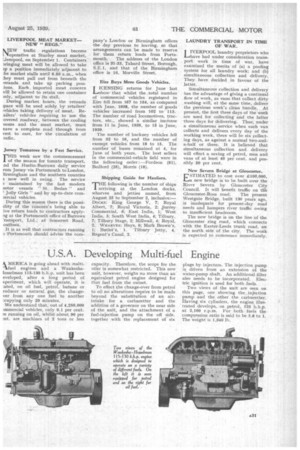U.S.A. Developing Multi-fuel Engine
Page 33

If you've noticed an error in this article please click here to report it so we can fix it.
MERICA is going ahead with ,nultiAfuel engines and a Waukeshafesselman 115-130 b.h.p. unit has been eveloped, after a long period of xperiment, which will operate, it is ated, on oil fuel, petrol, butane or reducer or natural gas, the changever from any one fuel to another :cupying only 20 minutes.
We understand that, out of 4,250,000 nnmercial vehicles, only 0.1 per cent. re running on oil, whilst about 90 per mt, are machines of 2 tons or less capacity. Therefore, the scope for the oiler is somewhat restricted. This new unit, however, weighs no more than an equivalent petrol engine designed for that fuel from the outset.
To effect the change-over from petrol to oil no alterations require to be made beyond the substitution of an airintake for a carburetter and the addition of a governor on the near side of the unit, and the attachment of a fuel-injection pump on the off side. together with the replacement of six
plugs by injectors. The injection pump is driven from an extension of the water-pump shaft. An additional filter also needs to be incorporated. Electric ignition is used for both fuels.
Two views of the unit are seen on this page, one showing the injection pump and the other the carburetter. Having six cylinders, the engine. illustrated develops, on petrol, 125 b.h.p. at 2,100 r.p.in. For both fuels the compression ratio is said to be 5.8 to 1. The iveight is 1,340 lb.












































































